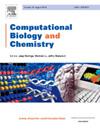Convolutional Neural Network approach to classify mitochondrial morphologies
IF 2.6
4区 生物学
Q2 BIOLOGY
引用次数: 0
Abstract
The morphology of the mitochondrial network is a major indicator of cellular health and function, with changes often linked to various physiological and pathological conditions. As a result, efficient methods to quickly assess mitochondrial shape in cellular populations from microscopy images in a quantitative manner are of high interest for the health and life sciences. Here, we present MitoClass, a deep learning-based software designed for automated mitochondrial classification. MitoClass employs a classification algorithm that categorizes mitochondrial network shapes into three classes: fragmented, intermediate, and elongated. By leveraging super-resolution images, we curated a comprehensive dataset for training, including both high- and low-resolution representations of mitochondrial networks. Using a Convolutional Neural Network (CNN) architecture, our model effectively distinguishes between different mitochondrial morphologies. Through rigorous training and validation, MitoClass provides a fast, accurate, and user-friendly solution for researchers and clinicians to assess the organization of the mitochondrial network as a proxy for studying organelle health and dynamics.
卷积神经网络方法对线粒体形态进行分类
线粒体网络的形态是细胞健康和功能的主要指标,其变化通常与各种生理和病理条件有关。因此,从显微镜图像中以定量方式快速评估细胞群体线粒体形状的有效方法对健康和生命科学具有很高的兴趣。在这里,我们展示了MitoClass,一个基于深度学习的软件,用于自动线粒体分类。MitoClass采用一种分类算法,将线粒体网络形状分为三类:碎片化、中间化和细长化。通过利用超分辨率图像,我们为训练策划了一个全面的数据集,包括线粒体网络的高分辨率和低分辨率表示。使用卷积神经网络(CNN)架构,我们的模型有效地区分了不同的线粒体形态。通过严格的培训和验证,MitoClass为研究人员和临床医生提供了一个快速、准确和用户友好的解决方案,以评估线粒体网络的组织,作为研究细胞器健康和动态的代理。
本文章由计算机程序翻译,如有差异,请以英文原文为准。
求助全文
约1分钟内获得全文
求助全文
来源期刊

Computational Biology and Chemistry
生物-计算机:跨学科应用
CiteScore
6.10
自引率
3.20%
发文量
142
审稿时长
24 days
期刊介绍:
Computational Biology and Chemistry publishes original research papers and review articles in all areas of computational life sciences. High quality research contributions with a major computational component in the areas of nucleic acid and protein sequence research, molecular evolution, molecular genetics (functional genomics and proteomics), theory and practice of either biology-specific or chemical-biology-specific modeling, and structural biology of nucleic acids and proteins are particularly welcome. Exceptionally high quality research work in bioinformatics, systems biology, ecology, computational pharmacology, metabolism, biomedical engineering, epidemiology, and statistical genetics will also be considered.
Given their inherent uncertainty, protein modeling and molecular docking studies should be thoroughly validated. In the absence of experimental results for validation, the use of molecular dynamics simulations along with detailed free energy calculations, for example, should be used as complementary techniques to support the major conclusions. Submissions of premature modeling exercises without additional biological insights will not be considered.
Review articles will generally be commissioned by the editors and should not be submitted to the journal without explicit invitation. However prospective authors are welcome to send a brief (one to three pages) synopsis, which will be evaluated by the editors.
 求助内容:
求助内容: 应助结果提醒方式:
应助结果提醒方式:


